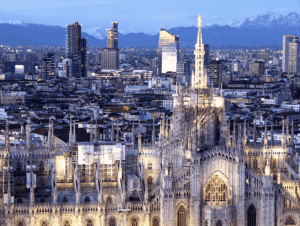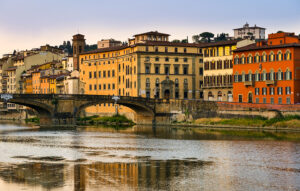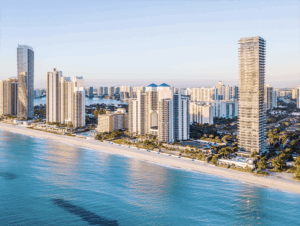The southern upstart is making noise with tax breaks and bargain prices, but Italy’s undisputed champion isn’t worried
For generations, Tuscany has reigned supreme as Italy’s most coveted real estate market for international buyers. Its rolling hills, medieval villages, and world-class wines have made it the default choice for everyone from Hollywood stars to Silicon Valley executives seeking their own slice of la dolce vita.
And despite headlines proclaiming the rise of alternatives, that dominance shows little sign of fading. Even as Puglia—the sun-drenched heel of Italy’s boot—captures attention with dramatic growth rates, Tuscany’s mature market continues to command premium prices and unwavering loyalty from the world’s wealthiest buyers.
The Numbers Tell a Nuanced Story
Yes, Puglia’s buyer inquiries surged 62% last year, according to James Edition, a luxury property portal. But context matters: Tuscany’s modest 1.2% growth reflects a market operating at capacity, not decline. When you’re already the established king, explosive percentage increases become mathematically impossible.
More revealing: prime property prices in Tuscany’s Chianti region still command €4,000 per square meter—a 14% premium over Puglia’s Valle d’Itria at €3,500. And Tuscany achieved this while appreciating a steady 6% since 2021, compared to Puglia’s more volatile 20% jump that suggests speculation rather than stable value.
Global real estate giants are indeed opening Puglian outposts—Coldwell Banker has launched seven offices since 2022, Engel & Völkers four since 2023—but these same firms maintain far more extensive networks across Tuscany, where infrastructure, services, and established buyer confidence have been built over decades.
“We have a longer list of people looking in Puglia now,” admits Gemma Bruce, a London-based property finder who works across Italy. Yet she immediately adds the qualifier that matters: “Renovation projects are a fraction of what you might find in Tuscany’s favored spots—if you can even find them there.”
That scarcity is the ultimate luxury. Tuscany doesn’t need to compete on price because it’s selling something Puglia can’t replicate: proven pedigree.
What’s Really Driving Puglia’s Moment
Tax Arbitrage and Government Incentives
Much of Puglia’s surge traces directly to Italy’s evolving tax incentives specifically designed to develop the underpopulated south. The pensioner scheme capping foreign income tax at 7%? It’s restricted to towns under 20,000 residents—effectively excluding Tuscany’s established communities.
Since 2019, around 1,000 people have taken advantage, including Jeffrey Larson, a retired Minneapolis attorney who purchased a villa near Brindisi. “That’s compared to €6,000 back home,” Larson says of the €2,000 annual cost for Italy’s public health service.
Another program offers returning expats and highly qualified foreigners a 50% income tax discount for five years, reaching 90% in the south. It’s attracted 50,000 people since 2015—a government-subsidized arbitrage play that Tuscany’s established market doesn’t require.
Meanwhile, the high-profile flat tax for ultra-high-net-worth individuals—recently increased from €100,000 to €200,000 annually—applies nationwide. And where are most of those 4,000 wealthy relocations settling? Not Puglia.
Infrastructure Catching Up, Not Leading
A new direct flight from New York to Bari launched in June 2024. Tuscany? It’s been accessible via Florence, Pisa, and Rome for generations, with extensive rail connections that make car ownership optional rather than mandatory.
The 2010 opening of Borgo Egnazia—which hosted Madonna, the Beckhams, and last year’s G7 summit—put Puglia on the international map for the first time. Tuscany’s legendary hospitality infrastructure has been attracting global elites since the Renaissance.
Rocco Forte’s Masseria Torre Maizza and chic beach clubs like San Domenico a Mare represent Puglia’s attempt to match what places like Forte dei Marmi and Portofino established decades ago.
“These attracted the fashionable crowd and digital nomads from Milan during the pandemic,” notes Diletta Giorgolo of Italy Sotheby’s International Realty—describing a trend toward remote work that’s temporary by nature, not the generational wealth and permanent relocations that anchor Tuscany’s market.
The Value Proposition Or Value Trap?
Where Cheaper Doesn’t Mean Better
The price differential is real but telling. Unrenovated properties in Puglia’s Salento region average €1,000 per square meter—less than half Tuscany’s €2,500 in Chianti. Even after renovation, Puglian properties reach €6,000 per square meter in prime areas, versus €2,000 for typical unrenovated Tuscan homes.
But here’s what those numbers actually reveal: Tuscany’s unrenovated properties still command double Puglia’s because the underlying land value, location, and resale confidence justify it. And Tuscany’s renovated properties? They’re not even in the same conversation—they’re in a category James Edition doesn’t need to track because everyone already knows the numbers start much higher.
Property transactions around Brindisi jumped 34% between 2018 and 2023. Impressive—until you realize Tuscany’s transaction volume was already so substantial that comparable percentage growth would represent impossible market saturation.
Consider what’s being marketed as a deal: Adam Chappell’s 500-year-old property near Nardò for €70,000, requiring another €200,000 in renovations. Total investment: €270,000 for a location that “wasn’t a ghost town” in winter—hardly a ringing endorsement.
Compare that to what €270,000 won’t buy you in Tuscany: anything. Because Tuscany’s market has already priced in decades of proven appreciation, established communities, world-class dining and wine, superior healthcare access, and year-round vibrancy that doesn’t require defensive comparisons to Prague.
What You’re Actually Buying – And What You’re Missing
Puglia’s architectural heritage offers trulli—distinctive drystone houses with conical roofs that earned UNESCO status. They’re undeniably charming and unique to the region, initially built as 14th-century storehouses.
Tuscany offers the Renaissance. The Medicis. Brunelleschi’s dome. Michelangelo’s David. Vineyards that produce Brunello, Chianti Classico, and Super Tuscans commanding hundreds per bottle. The Uffizi. Villages where every stone has witnessed centuries of Western civilization’s most important cultural moments.
Sotheby’s International Realty markets a seven-bedroom Puglian estate with trullo near Ostuni for €3.35 million. For context, that’s increasingly entry-level pricing for comparable properties in Tuscany’s prime areas—and Tuscan estates don’t require explaining what a trullo is to dinner guests.
The Risk That Nobody Mentions
Southern Italy’s Planning Chaos
Here’s where Puglia’s value proposition encounters reality. Properties routinely feature illegally enclosed courtyards or unauthorized extensions. Buildings in historic centers have required planning permission since 1942; those outside since 1967.
“If you’re buying a palazzo untouched for a century, that’s fine, but anything with modifications after those dates requires paperwork proving it’s legal,” warns Caroline Edwards of Personal Puglia, a 20-year consultancy.
The kicker? Engel & Völkers rejects 60-70% of properties offered for sale due to illegal alterations or title deed problems. In Tuscany, that due diligence failure rate is virtually unheard of among established agencies because the market matured decades ago with proper legal infrastructure.
Francesco Distante of Puglia Dream says his firm only markets vetted properties—which begs the question of how many aren’t vetted. Foreign clients now represent 80% of his sales, up from half pre-pandemic. Americans, French, and Germans dominate purchases above €1 million, while Dutch, Italian, and British buyers target the €500,000-€800,000 range.
Notice who’s conspicuously missing from that buyer list? The Italian north. Wealthy Italians still overwhelmingly choose Tuscany when they want a second home, voting with their wallets for proven quality over discounted experiments.
Why Institutional Money Tells the Real Story
Major hospitality groups are indeed eyeing Puglia. Newly opened hotels include Palazzo Tafuri in Nardò and Vista Ostuni. Four Seasons Costa Merlata near Ostuni arrives in 2027.
But Tuscany? It already has more Michelin-starred restaurants than entire nations. Its luxury hospitality market is so mature that new entrants compete for scraps while established properties like Castello di Casole and Rosewood Castiglion del Bosco command rates that make Four Seasons pricing look accessible.
When Four Seasons finally plants its flag in Puglia, it won’t be validation that the region has arrived—it’ll be confirmation that even elite brands eventually need to find emerging markets when the established ones are fully developed and highly competitive.
“The bumpy roads and shops that close for lunch add to its authenticity,” says Distante of Puglia’s slower pace—a diplomatic way of describing infrastructure gaps that Tuscany solved generations ago.
The Verdict
Puglia is experiencing a genuine moment. Its growth metrics are impressive. The tax incentives are real. The architectural heritage is authentic. For buyers seeking value and willing to accept frontier-market risks, it offers compelling opportunities.
But Tuscany’s crown? It’s not up for grabs.
The region that invented the Renaissance, perfected wine, and defined elegance for the Western world doesn’t need 62% inquiry growth because it’s operating at a level where such metrics become irrelevant. It commands premium pricing because it delivers premium everything: art, cuisine, wine, culture, infrastructure, healthcare, legal certainty, and the confidence that your €4,000-per-square-meter investment sits on centuries of proven value.
Puglia is where smart investors go to find deals. Tuscany is where wealthy buyers go to build legacies.
The question isn’t whether Puglia can compete with Tuscany. It’s whether comparing them even makes sense—and whether anyone willing to compromise on Tuscany was ever really Tuscany’s target buyer in the first place.
Source: Financial Times



